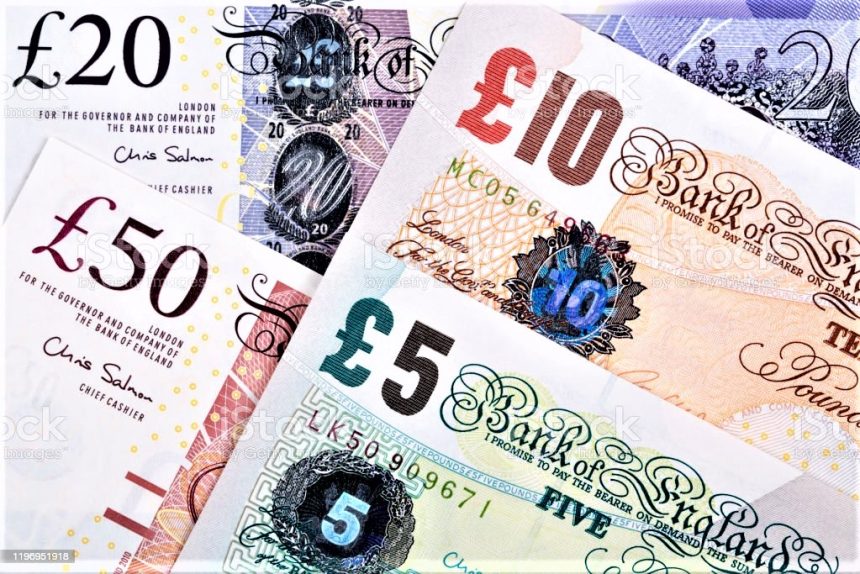The British Pound (GBP) is trading in a tight range around the 1.3500 level against the US Dollar (USD) during Tuesday’s European session, as investors await key economic releases and geopolitical developments. This sideways movement reflects market caution ahead of the flash UK and US S&P Global Purchasing Managers’ Index (PMI) figures for July, due on Thursday.
These PMI readings will provide timely insights into business activity and economic resilience in both the UK and US factors that are likely to shape near-term central bank policy expectations and influence forex market dynamics.
UK PMI: A Gauge of Economic Pulse Amid Hiring Slowdown
The UK Composite PMI for July is projected to slip marginally to 51.9 from June’s 52.0. While a reading above 50 still signals expansion, the slight moderation suggests subdued momentum amid a hiring slowdown. Employers have reportedly curbed new recruitment to offset rising employment costs, partly due to increased social security contributions implemented earlier this year.
This restraint on hiring may eventually dampen consumer demand and domestic spending if prolonged—an outcome the Bank of England (BoE) will monitor closely ahead of its upcoming monetary policy decision.
BoE Expected to Cut Rates as Cost Pressures Ease
Markets are currently pricing in a 25-basis-point interest rate cut by the BoE next month, which would lower the policy rate to 4%. With UK inflation easing in recent months and wage pressures stabilizing, the central bank has gained room to pivot toward a more accommodative stance.
While the BoE had previously signaled a cautious approach to rate cuts, a softening in business activity or labor market conditions confirmed by Thursday’s PMI data could solidify the case for monetary easing. For the Pound Sterling, a dovish BoE tone may cap upside potential against the US Dollar in the near term.
US Dollar Eyes PMI and Tariff Headlines
Across the Atlantic, the US Dollar is regaining ground after Monday’s modest retreat. The US Dollar Index (DXY), which tracks the currency against six major peers, remains buoyant just below 98.00, after failing to sustain a recent four-week high near 99.00. The Greenback’s trajectory this week hinges on two critical developments: upcoming US PMI data and President Trump’s tariff policy.
Thursday’s release of the flash US S&P Global PMI for July will be closely watched. Economists expect modest growth in the services and manufacturing sectors, but any downside surprise could trigger a reassessment of the Federal Reserve’s interest rate path.
Fed Rate Cut Bets Eased Amid Sticky Tariff-Driven Inflation
Recent inflation data has challenged earlier expectations of aggressive Fed rate cuts. The US Consumer Price Index (CPI) for June showed that tariffs have pushed up prices of imported goods, prompting the Fed to maintain a more cautious policy stance. As a result, traders have reduced the probability of a rate cut in the Fed’s September meeting.
This hawkish shift provides fundamental support for the US Dollar. However, any signs of slowing economic activity in Thursday’s PMI could revive speculation of a rate cut, especially if trade tensions intensify.
Trump Tariff Deadline Looms Over Market Sentiment
President Trump’s August 1 deadline for securing trade deals with various nations is rapidly approaching, adding a layer of uncertainty to global financial markets. While agreements have been finalized with the UK, Vietnam, Indonesia, and a limited pact with China, negotiations with several major trading partners—including the EU, Japan, and Canada—remain unresolved.
A Wall Street Journal report over the weekend revealed that Trump is considering a baseline tariff rate increase on EU imports from 10% to potentially 15–20%. This escalation threatens to reignite a transatlantic trade war, particularly as EU officials have vowed to retaliate if such levies are imposed.
US-EU Trade Tensions Could Undermine USD Strength
Although tariffs may temporarily boost US inflation by raising import prices, they risk damaging long-term growth and investor confidence. If the trade standoff between Washington and Brussels worsens, markets could begin to question the sustainability of the US economic expansion—potentially weighing on the Dollar.
In that context, the Pound Sterling may find some relative strength, especially if the UK manages to avoid direct fallout from the trade escalation. However, the broader risk-off sentiment could still cap gains for risk-sensitive currencies like the GBP.
Currency Heatmap: GBP Resilient, But Lags vs Commodity Peers
Tuesday’s forex heatmap shows the Pound Sterling trading flat against most major currencies, reflecting its stable performance amid global uncertainties. GBP has gained 0.09% against the USD and 0.04% against the JPY, while showing small losses against the EUR (-0.13%) and AUD (-0.24%).
The Pound’s weakness against commodity-linked currencies like the Australian and Canadian Dollars suggests a slight investor preference for higher-yielding assets, possibly on bets of global economic recovery. However, that trend could reverse quickly if Thursday’s PMI reports disappoint.
What to Watch This Week
Thursday (July 25):
UK Flash Manufacturing, Services, and Composite PMI
US Flash PMI data (Manufacturing, Services, Composite)
August 1:
Deadline for Trump’s trade deal negotiations
Potential announcement of new baseline tariff rates
Technical Outlook: Pound Stuck in Consolidation Range
On the technical front, GBPUSD continues to trade within a tight consolidation range around the 1.3500 psychological mark. A sustained break above 1.3550 could open the door to 1.3600 and beyond, especially if UK PMI beats expectations and trade tensions ease.
Conversely, a downside break below 1.3450 may trigger further weakness, potentially dragging the pair toward 1.3400. Momentum indicators such as RSI and MACD remain neutral, reflecting indecision among traders.
Conclusion: Pound Sterling Awaits Clarity on Data and Policy Fronts
The Pound Sterling remains caught in a wait-and-watch mode as traders assess incoming UK economic data and brace for further trade headlines from the US. With PMI figures from both economies due on Thursday, volatility in the GBPUSD pair could rise significantly in the coming sessions.
While a dovish BoE and escalating US-EU trade tensions may limit Sterling’s upside, any dovish shift by the Fed or better-than-expected UK data could help the Pound regain ground. Until then, GBP traders should prepare for a tug-of-war driven by data surprises, central bank commentary, and geopolitics.
Disclaimer: This blog is for informational purposes only and does not constitute financial advice. Always conduct your own research and consult a professional advisor before making investment decisions.
[sc_fs_multi_faq headline-0=”h2″ question-0=”Why is the Pound Sterling trading sideways against the US Dollar?” answer-0=”The Pound is consolidating as investors await key PMI data from both the UK and US. Uncertainty over central bank policies and US trade tariffs has also kept traders on the sidelines.” image-0=”” headline-1=”h2″ question-1=”What is the UK Composite PMI expected to show?” answer-1=”The July Composite PMI is forecast to ease slightly to 51.9 from 52.0, indicating moderate growth in business activity despite a slowdown in hiring.” image-1=”” headline-2=”h2″ question-2=”Is the Bank of England likely to cut interest rates?” answer-2=”Yes, markets are pricing in a 25-basis-point rate cut to 4% next month, amid cooling inflation and reduced hiring momentum.” image-2=”” count=”3″ html=”true” css_class=””]









